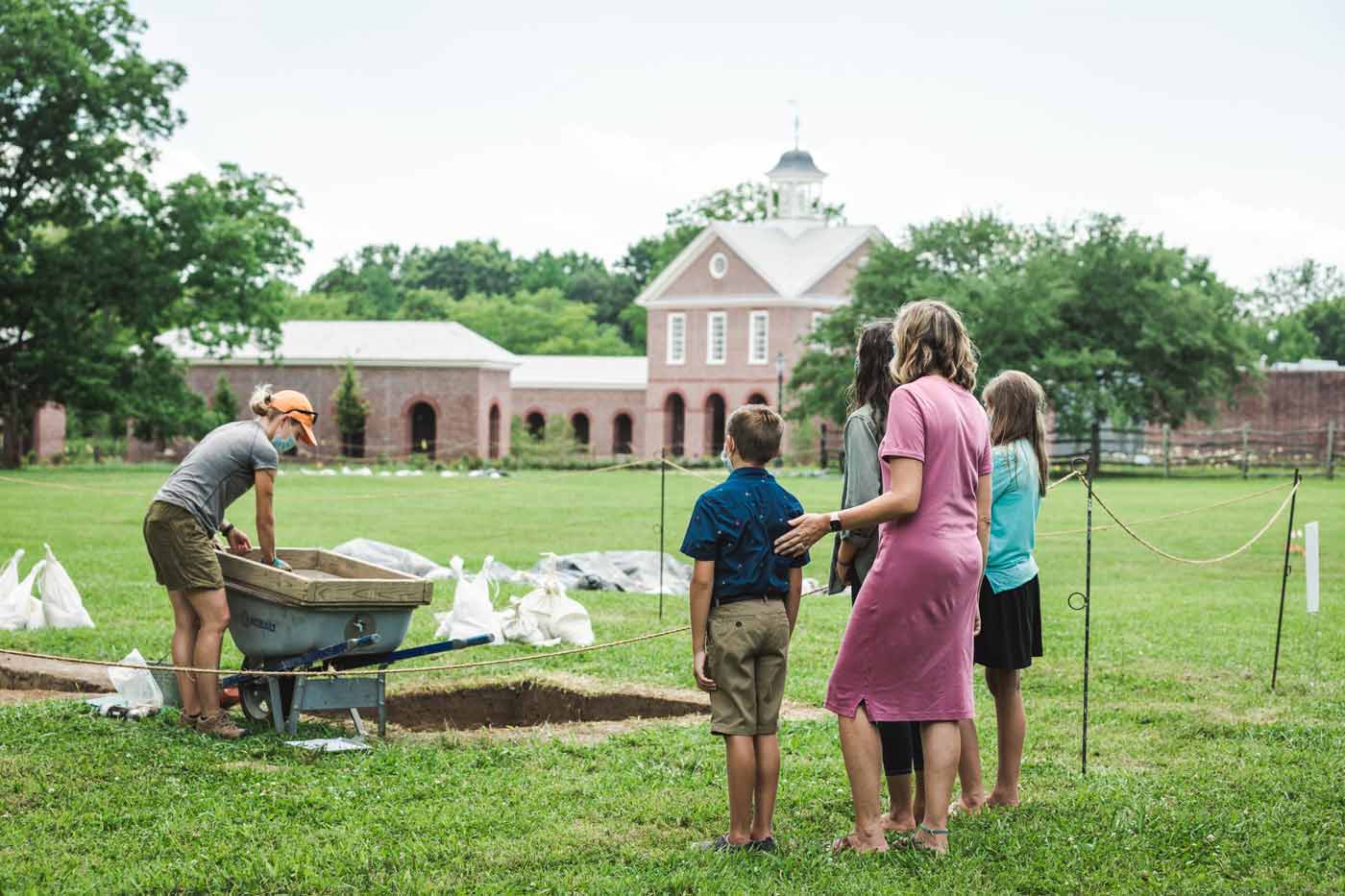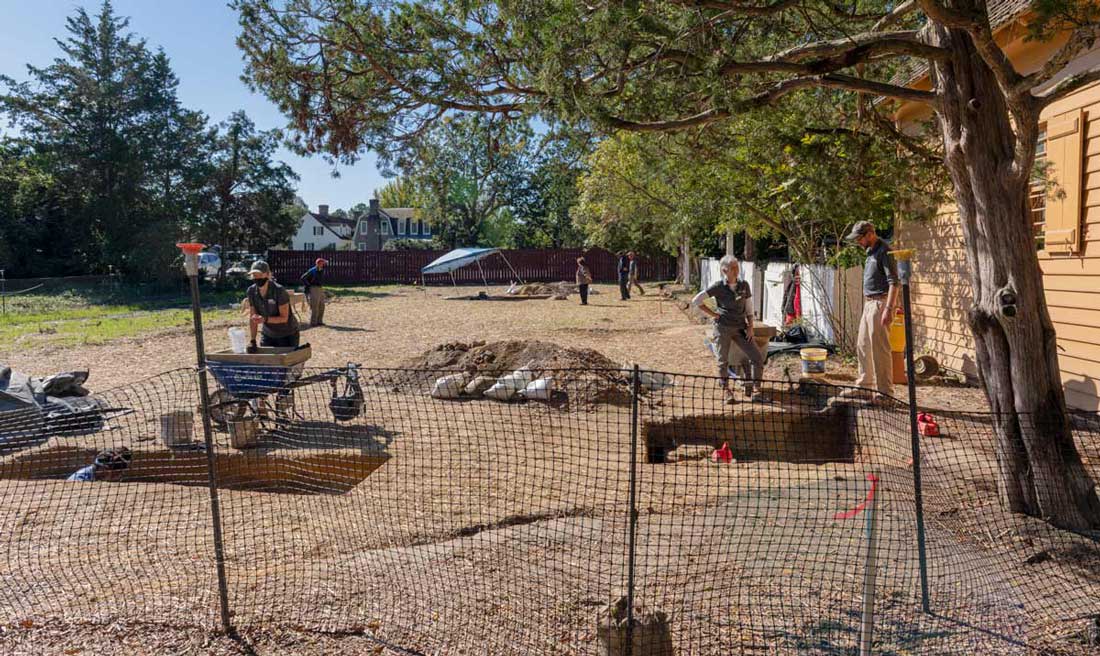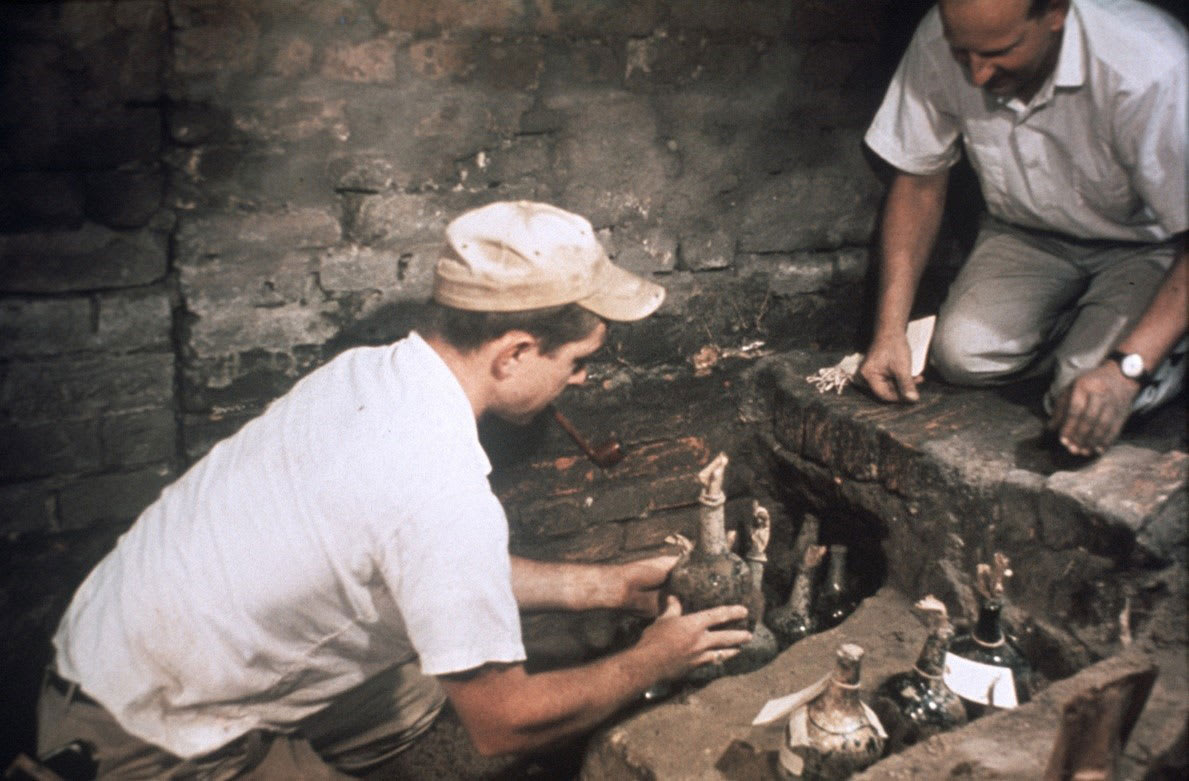In the Fall of 2018, Colonial Williamsburg began a project investigating our large collection of colonoware vessels and fragments. Our goal is to identify how this ceramic type was used in the 18th century by diverse groups of people, including enslaved African Americans, tavern keepers, and tradesmen by exploring spatial or temporal patterns in the distribution of colonoware across sites inside and outside Williamsburg.
Colonoware is a type of locally-produced coarse earthenware ceramic commonly found on colonial period archaeological sites. In 1962, Colonial Williamsburg archaeologist Ivor Noël Hume was the first to recognize colonoware as a distinct ceramic type. At the time, he called it “Colono-Indian ware” because he thought that Native Americans produced the ware and sold it to English colonists. Since then, many scholars have argued that enslaved African Americans could have also produced and sold these ceramics. While there is debate over who produced these pots, it is clear they were an important part of the local economy for both the potters making them and the individuals using them every day. For this reason, our study focuses on the pots themselves to help answer questions about who made them, who used them, where were they used, and whether any of these things changed over time.
Our research began with the identification of attributes for over 2,000 pieces of colonoware from historic sites where free and enslaved individuals lived and worked within and directly outside Williamsburg. Most pieces of colonoware contain temper, which is a material like sand or crushed shell that is blended into the clay when the pot is made to prevent cracking and shrinkage during the firing process. Though often appearing plain or undecorated, most colonoware vessels have highly burnished or shiny surfaces and some examples in our collection feature sawtooth or scalloped rim decorations. Colonoware was also made in a variety of vessel shapes. In addition to the chamber pot pictured here, colonoware vessels include plates, pans, pipkins, bowls, and porringers. For this project, Colonial Williamsburg Archaeology Lab Technicians and a graduate student from William & Mary recorded the temper, decoration style, vessel form and many other traits of each colonoware fragment in a spreadsheet. Analysis of this data showed that there were two or three distinct “types” of colonoware, with the primary difference being whether the sherds contained sand or shell temper.
These types may represent different groups of potters, or they may reflect different kinds of temper used for specific vessel forms by the same potting group. To investigate these “types” further, we have chosen a subset of our collection that reflect these “types” in several different vessel forms for special analysis. These samples will undergo both portable X-ray fluorescence (pXRF) and laser ablation analysis in early 2022. We hope these techniques will help us identify the chemical composition of the clay used to make these pots, which might then be used to identify if multiple potters were making the “types” from different clays, or if all the types used the same clays and might have been made by the same potters. With these, we hope to compare the smaller sample size with the larger attribute analysis data to determine if there are any stronger spatial or temporal patterns in the distribution of colonoware throughout the historic Williamsburg area.












